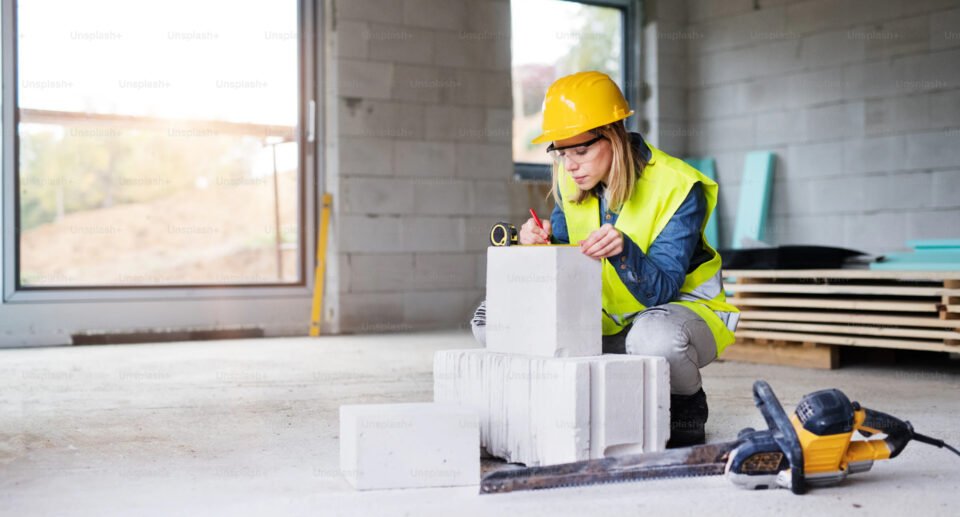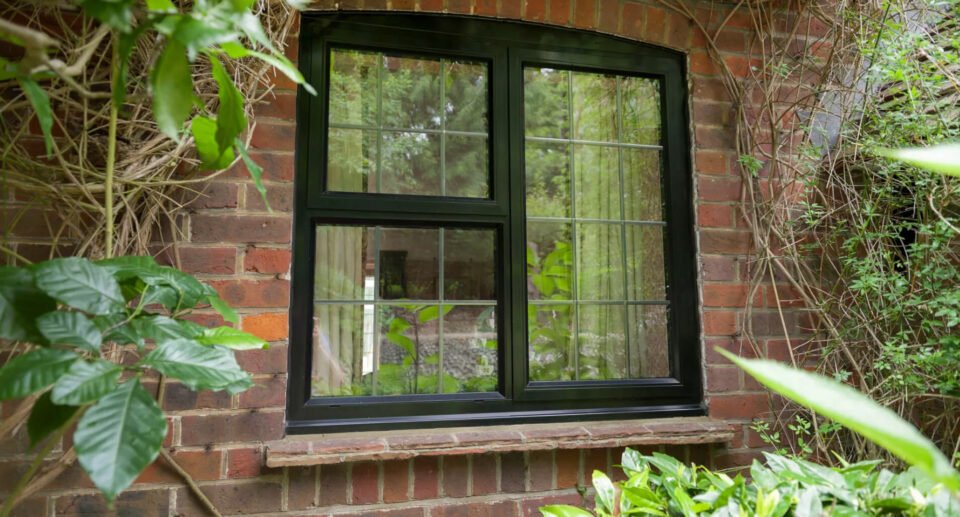How to Measure for Replacement Windows: A Step-by-Step Guide

Table of Contents
ToggleReplacing windows can be a daunting task, but it doesn’t have to be. Knowing how to measure for replacement windows is an essential step in the process. Whether you’re a seasoned DIYer or a homeowner looking to save money, accurate measurements are crucial for ordering the right size window replacement.
In this article, we’ll explore the reasons why measuring your windows is important, the steps you need to take to prepare for measurement, and the different ways you can measure your windows. We’ll also discuss ordering replacement windows, tips for recording measurements, and whether you should DIY or hire a professional. By the end of this guide, you’ll have all the knowledge you need to confidently measure your windows and order the right replacement windows for your home.
Key Takeaways
- Accurate measurements are crucial for ordering the right size window replacement.
- There are multiple ways to measure windows, and it’s important to choose the method that works best for you.
- Properly recording window measurements can save you time and money in the long run.
Why You Should Measure Your Windows
Accurate measurements are essential when measuring for replacement windows, as it ensures that the windows fit perfectly into the existing frame. It is important to measure the windows correctly to avoid any costly mistakes and headaches.
By measuring the windows, homeowners can ensure that the windows they purchase will fit the frames perfectly, which can save them on added labor costs.
Measuring the windows also helps homeowners to shop for windows more efficiently, both in-store and over the phone. It is essential to have the exact measurements on hand when shopping for windows to ensure that the windows purchased are the correct size.
In addition to ensuring a proper fit, measuring windows can also help identify any issues such as leaks, rot, or water damage. Replacing old windows with new, energy-efficient ones can also help homeowners save on energy costs and increase the resale value of their home.
Overall, measuring for replacement windows is an essential step in any home improvement project involving windows. It is a simple DIY task that can save homeowners time and money in the long run.
Prepping to Measure Windows
Before measuring for replacement windows, it is important to inspect the condition of the window frames, sills, sashes, and trim to ensure they are structurally sound.
Look for signs of water damage or rot such as discoloration, peeling or bubbling paint, visibly rotten wood, difficulty opening or closing, soft or crumbly wood, fog or condensation that cannot be removed, gaps in the corners of the interior casing trim, and light shining through cracks around the frame.
If any of these issues are present, it may be necessary to contact a window frame repair service before installing new windows.
Once the window frames are in good condition, it is safe to proceed with measuring for replacement windows.
How to Measure for Replacement Windows in 4 Different Ways
When it comes to measuring for replacement windows, there are different ways to do it depending on what you need. The following are four different ways to measure for replacement windows.
Check If Your Windows Are Square
Before measuring for replacement windows, it is important to ensure that your current window frames are square. This can be done by checking the diagonal measurements of the window frame. Here are the steps to check if your windows are square:
Place the end of a tape measure at the top right corner of the glass where the vertical and horizontal trims meet.
Hold the tape measure taut and measure diagonally to the bottom left corner where the two trims meet.
Record the measurement.
Take a second measurement diagonally down from the top left corner.
Record and compare the two measurements.
If both measurements match within 1/4 of an inch, the window frame is square and replacement windows can be ordered for a correct fit. If not, the window frame will need to be replaced beforehand or a new-construction window will need to be ordered instead of a replacement window.
Measure Window Width
To measure the true width of a window opening, three measurements need to be taken from the top, middle, and bottom of the window. Here are the steps to measure window width:
Raise the window sash to expose the jambs, which are the vertical parts forming the sides of the frame where the sash slides up and down.
Ignoring the width of the trim, extend the tape measure straight across the bottom of the window from just inside the left jamb to just inside the right jamb.
Close the window and repeat this measurement from the middle and top of the window.
Compare the width measurements and write down the shortest of the three. This is the true window opening width.
Measure Window Height
To measure the true height of a window opening, three measurements need to be taken from the windowsill, which is where the sash rests when closed and which can only be accessed by opening the window. Here are the steps to measure window height:
Starting on the far left side of the window, extend the tape measure straight up from the windowsill vertically to the head jamb.
Ignoring the height of the frame and trim, record the measurement.
Repeat steps 1 and 2 from the center and right side of the window.
Compare the height measurements and write down the shortest of the three. This is the true window opening height.
Measure Window Screens
Measuring for window screens depends on whether or not the window currently has a screen. If the window already has a screen that needs to be replaced because it’s damaged, simply measure the width and height of the existing screen. These are the dimensions needed when purchasing a replacement.
If a screen needs to be added to a window, follow these steps:
Pull the tape measure straight across the window horizontally to measure the distance between the screen channels on the window frame.
Subtract 1/8 inch from the measurement. This is the width dimension.
Raise the window sash and measure up from the lip, which is the ridge that holds a screen in place, along the screen channel to the sash.
Add 1/8 inch to the measurement. This is the height dimension.
By following these four different ways to measure for replacement windows, homeowners can ensure that they get the correct measurements for a perfect fit.
Ordering Replacement Windows
Once you have measured your windows for replacement, the next step is to order the replacement windows. Here are some important things to keep in mind when ordering replacement windows:
Choose a reputable manufacturer: Look for a manufacturer that has a good reputation for producing high-quality products.
Consider custom windows: If you have an unusual window size or shape, you may need to order custom windows. Custom windows can be more expensive than standard windows, but they will ensure a perfect fit.
Get a quote: Before ordering replacement windows, it is important to get a quote. This will give you an idea of the project cost and help you budget accordingly.
Consider storm windows: If you live in an area that experiences severe weather, you may want to consider adding storm windows. Storm windows can provide an extra layer of protection for your home and help to reduce energy costs.
By keeping these factors in mind, you can ensure that you order the right replacement windows for your home.
Tips for Properly Recording Window Measurements
When measuring windows for replacement, accuracy is crucial to ensure a perfect fit. Here are some tips to help you record your window measurements accurately:
- Use a measuring tape to record each measurement. Avoid using a ruler or yardstick, as these tools may not be precise enough.
- Record each measurement as width by height, rounding down to the nearest 1/8 inch. For instance, if your window is 60 inches tall and 34 inches wide, record the measurement as 34 inches x 60 inches.
- Label each set of measurements with the exact window location, such as “east side bedroom window.” Even if all windows in a room appear to be the same size, they may have slightly different measurements.
- Measure each window separately before ordering new windows to ensure that you get the right size for each window.
DIY vs. Hiring a Pro
Replacing windows can be a DIY project, but it may not be the best option for everyone. Here are some factors to consider when deciding whether to install windows yourself or hire a professional:
Skill level: Installing windows requires some level of skill and experience. If you don’t have experience with DIY projects or are not comfortable with using tools, it may be best to hire a professional window installer.
Number of windows: If you plan on replacing multiple windows, it may be more time-efficient and cost-effective to hire a professional.
Complexity of window design: If you are installing a custom or complex window design, it may be best to hire a window expert to ensure proper installation.
Cost: DIY window replacement costs can range from $75 to $1,500 per window, depending on the type, size, and style of the window. However, hiring a professional can cost an additional $100 to $800 per window, raising the cost range to between $175 and $2,300 per window.
Labor cost: In some markets, the labor cost can effectively double the entire cost of the window, making it more cost-effective to hire a professional.
Frequently Asked Questions
When it comes to replacing windows, homeowners often have many questions. Here are some frequently asked questions and their answers:
To measure for replacement windows, take horizontal measurements from the bottom, middle, and top of the window. Then, take vertical measurements from the left, center, and right.
The smallest of the three horizontal measurements and the smallest of the three vertical measurements are your rough opening dimensions (width by height).
No, you must measure from the inside.
Replacement windows are designed to fit into the existing window frame, while new construction windows require the existing frame to be removed and replaced.
It can be helpful to have a free consultation with a window professional. This ensures that you are ordering the correct size and type of windows for your home.
Look for a company with good reviews, experience, and a warranty on their products and services.
While it is possible to install replacement windows yourself, it is often best to hire a professional. This ensures that the windows are installed properly and to avoid any potential issues.

Hello, I’m Keith Jones. I’m the author and head of content here of door and window guide. I’ve been in the window and door industry for over 10 years in the UK and North America. I’ve had quite a few roles during my career mainly in Worldwide sales. I’m now semi retired so I thought I’d put my knowledge to good use educating people about all they might need to know about door and window related topics.






